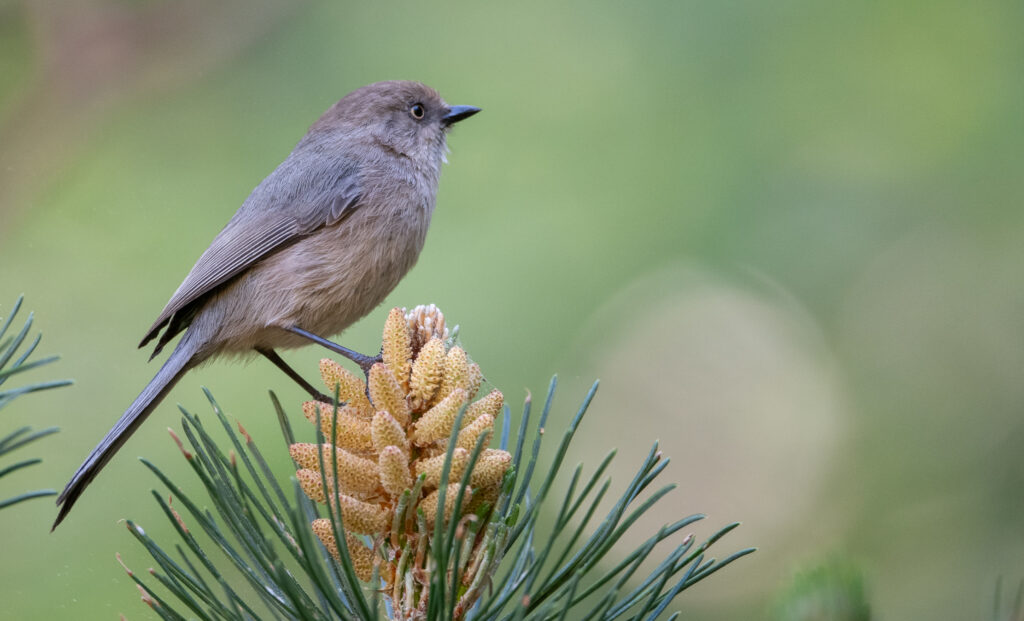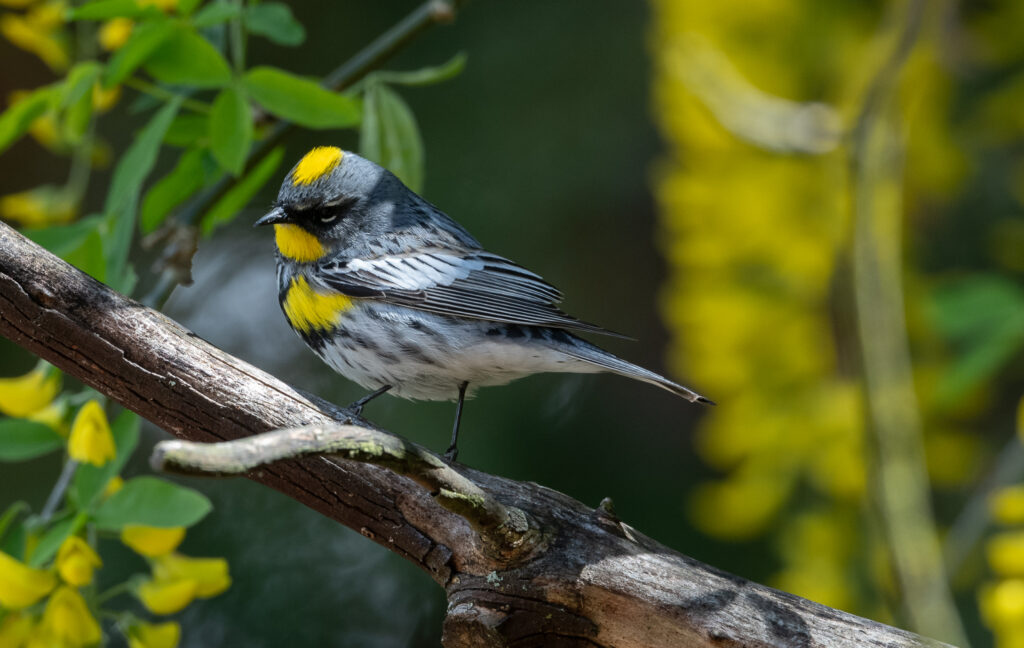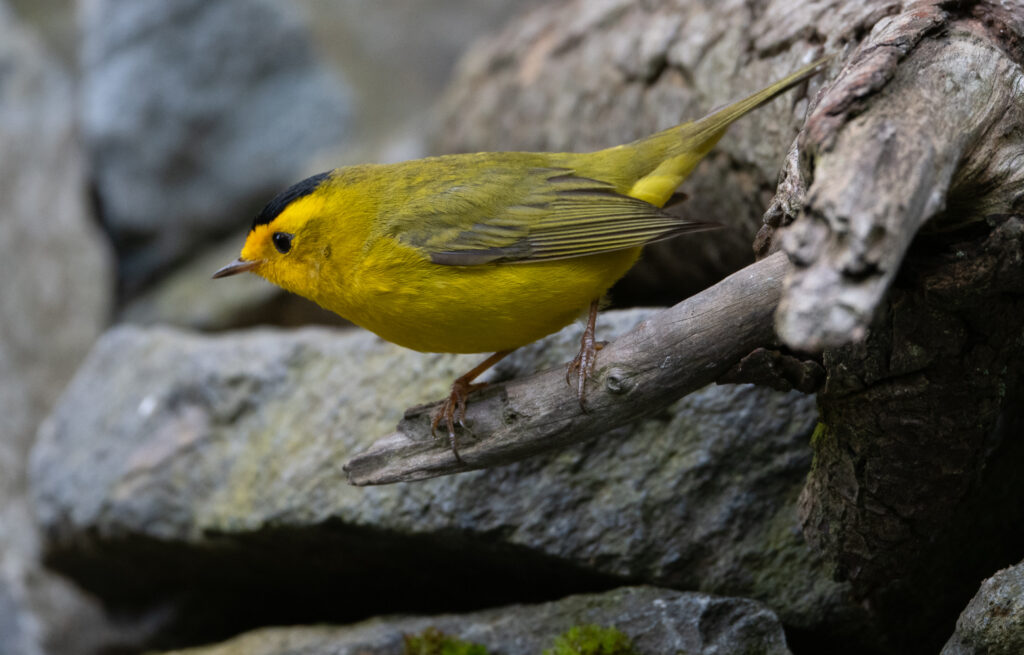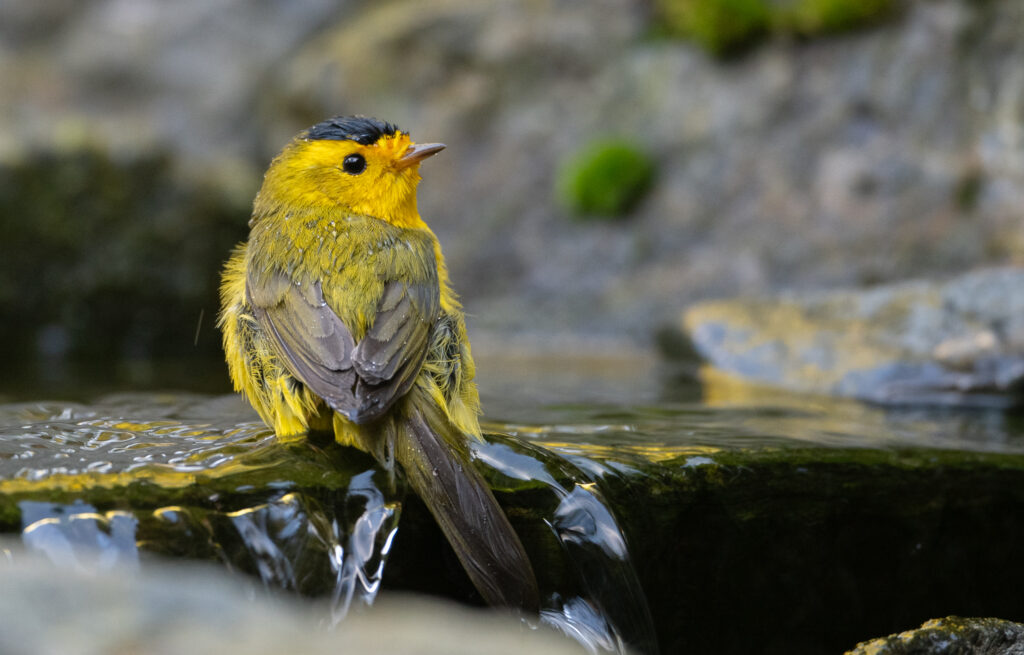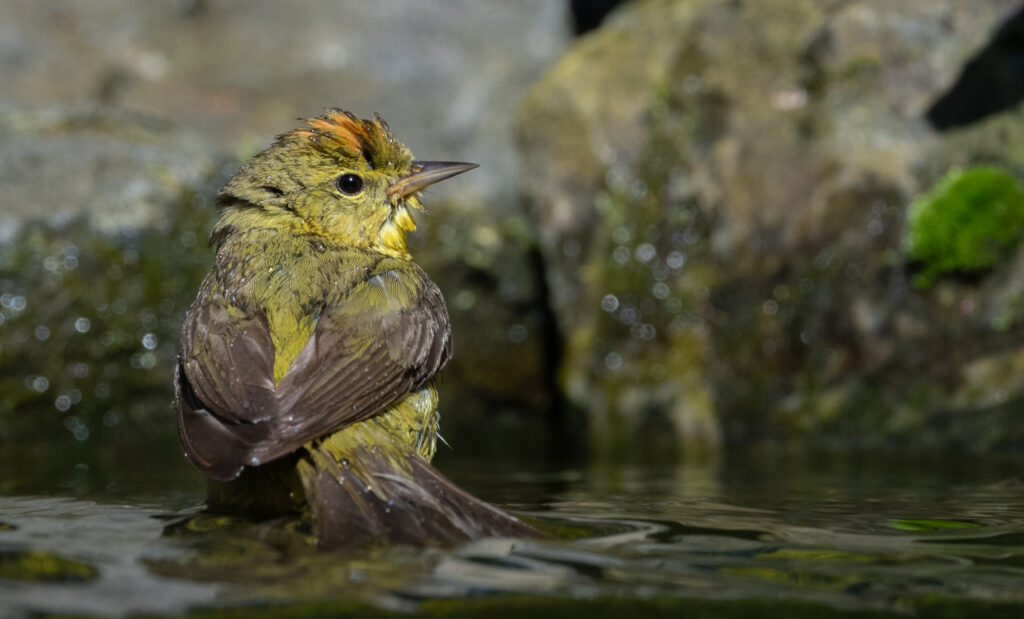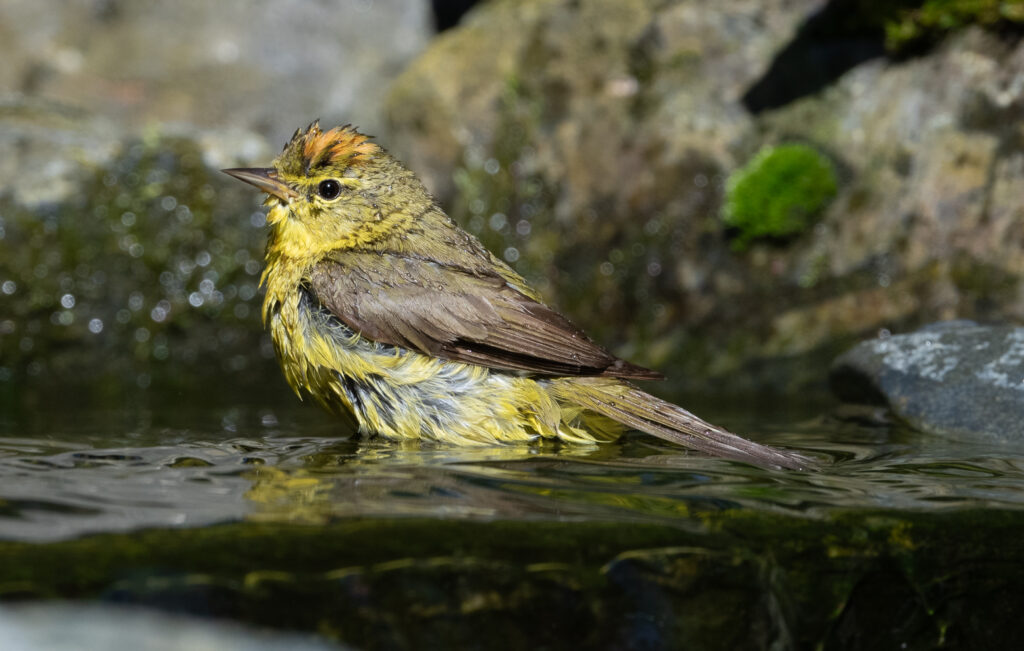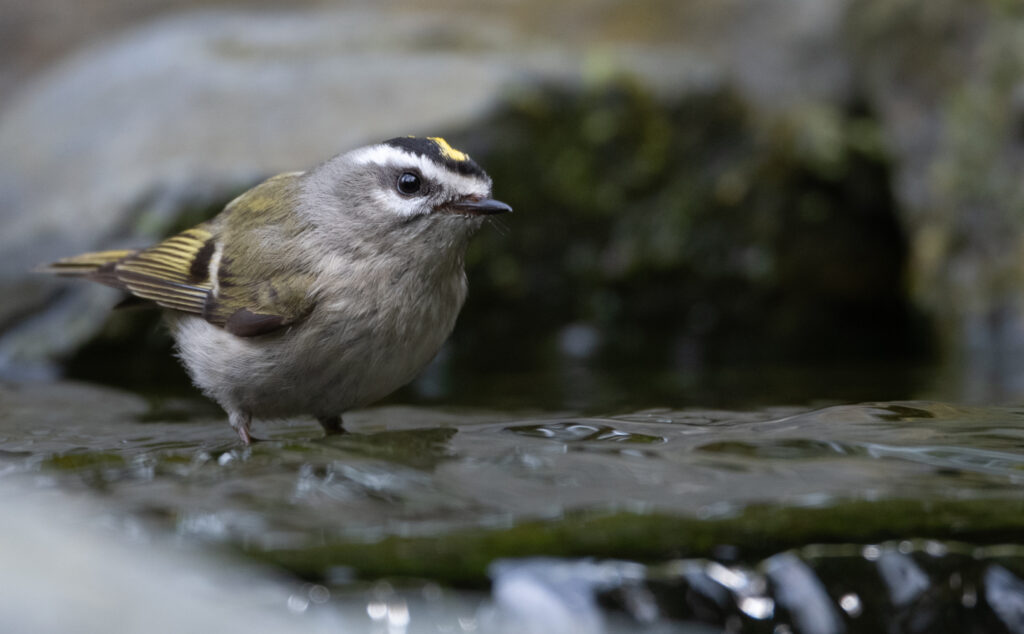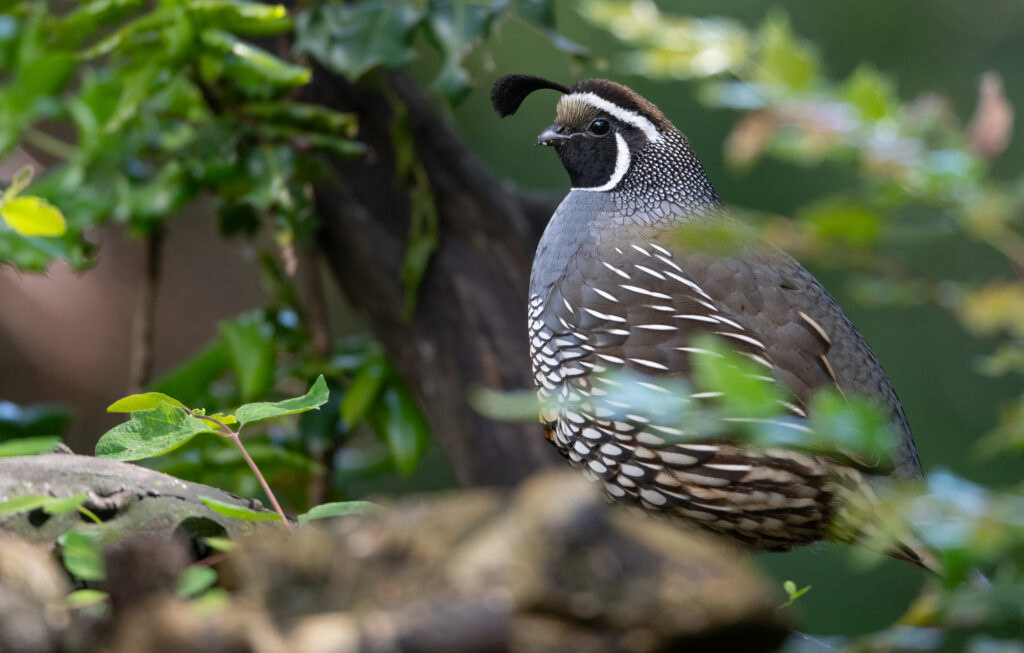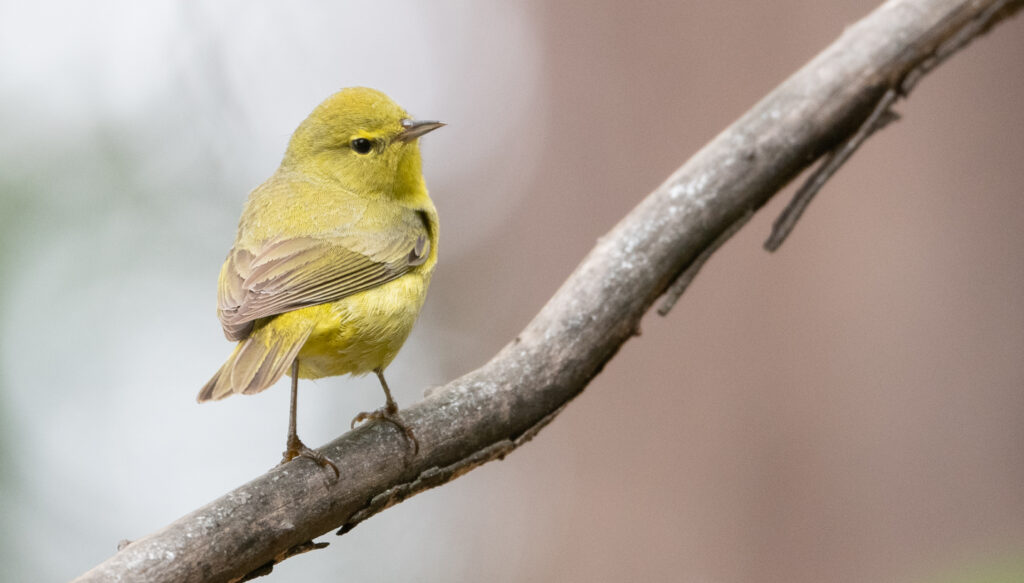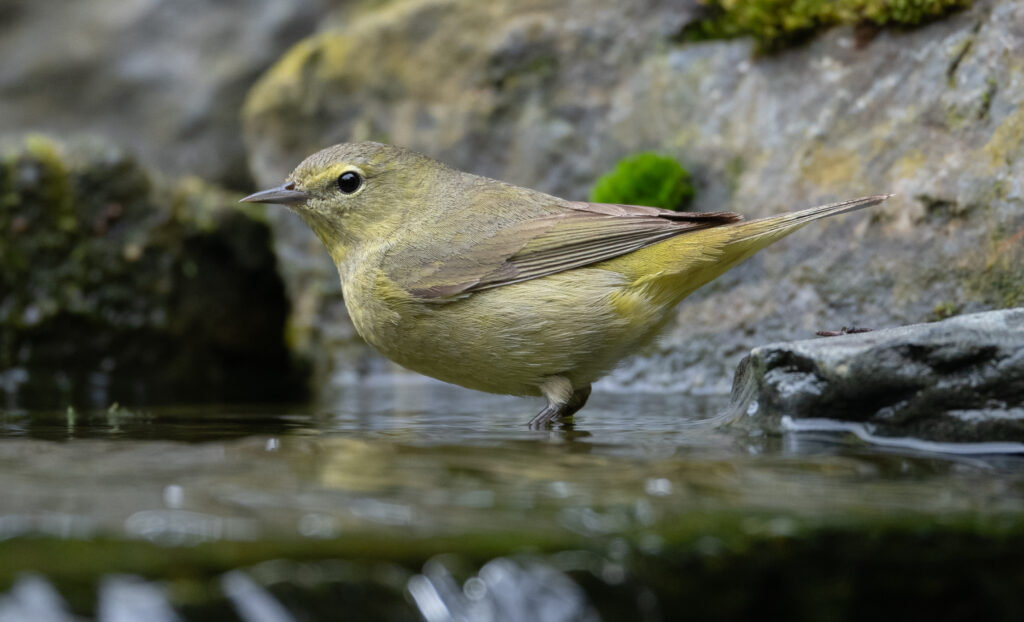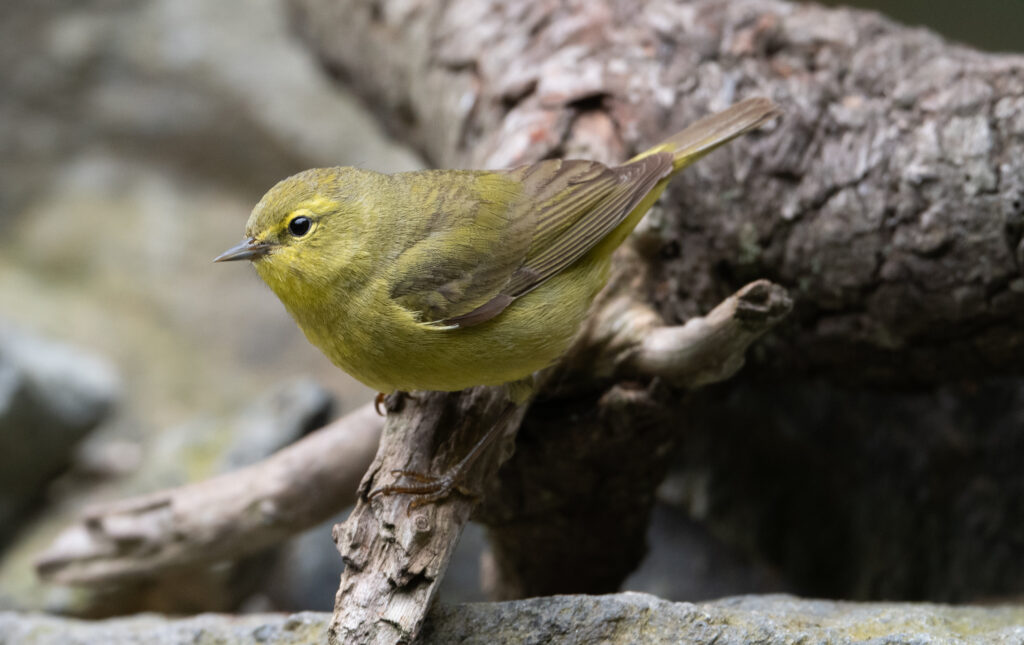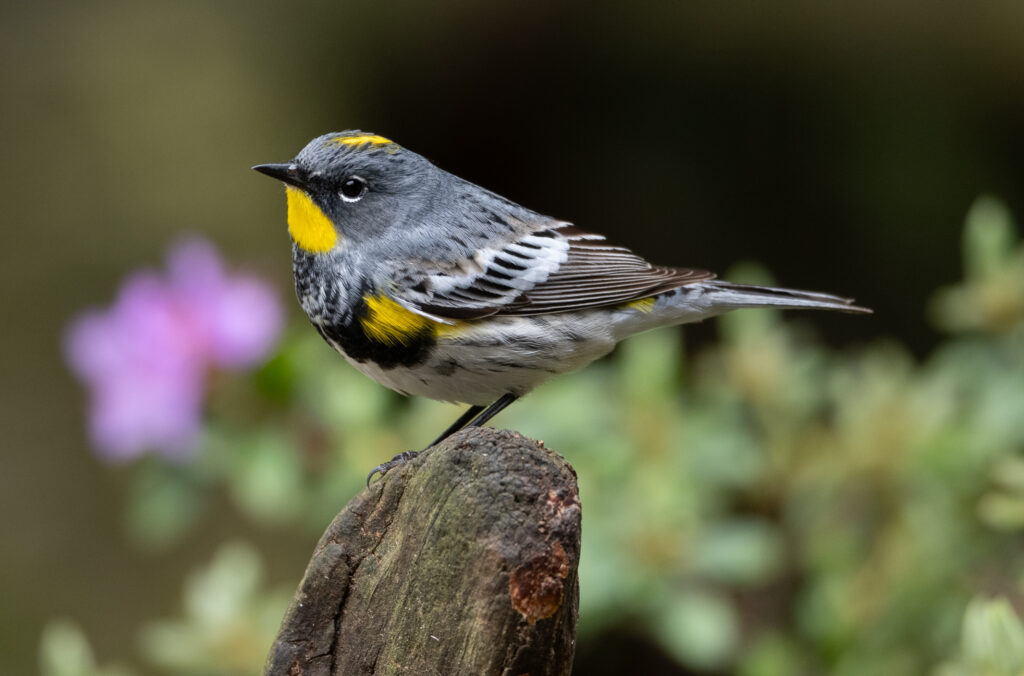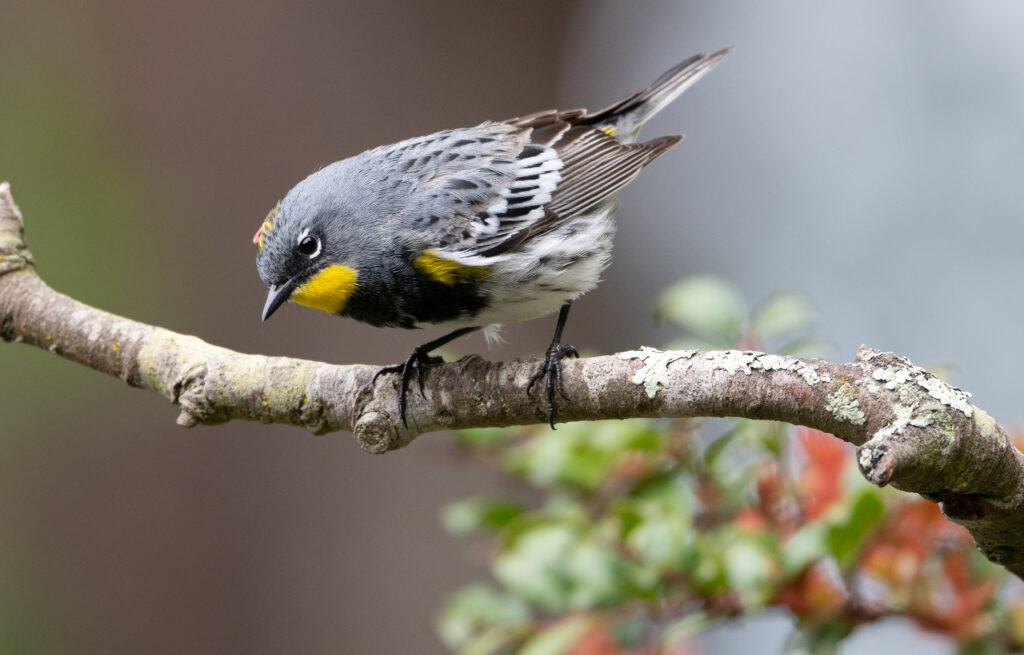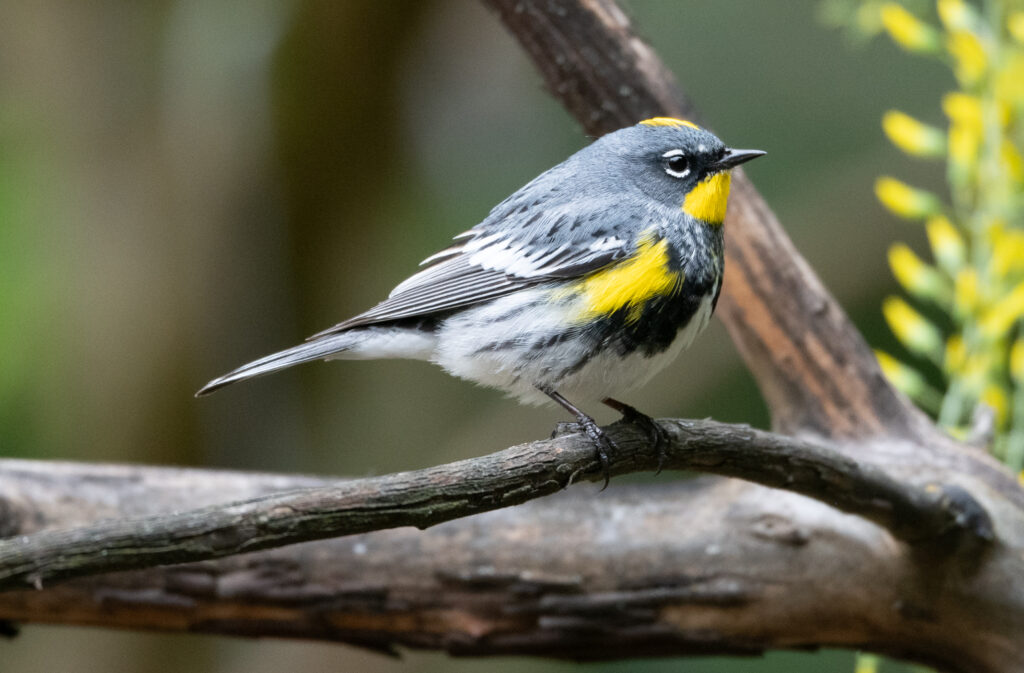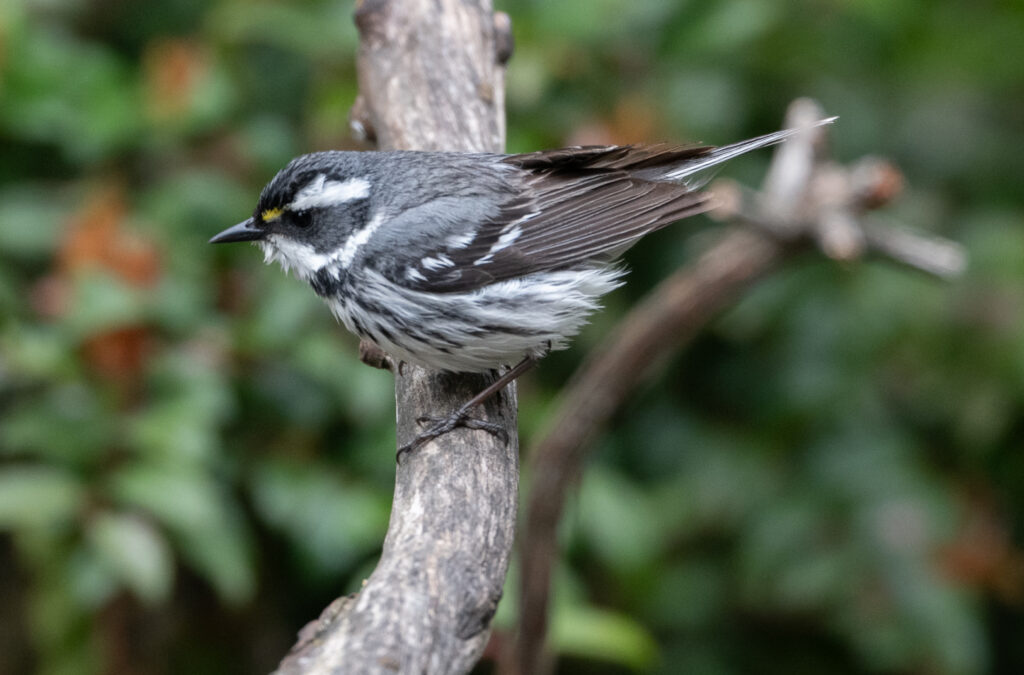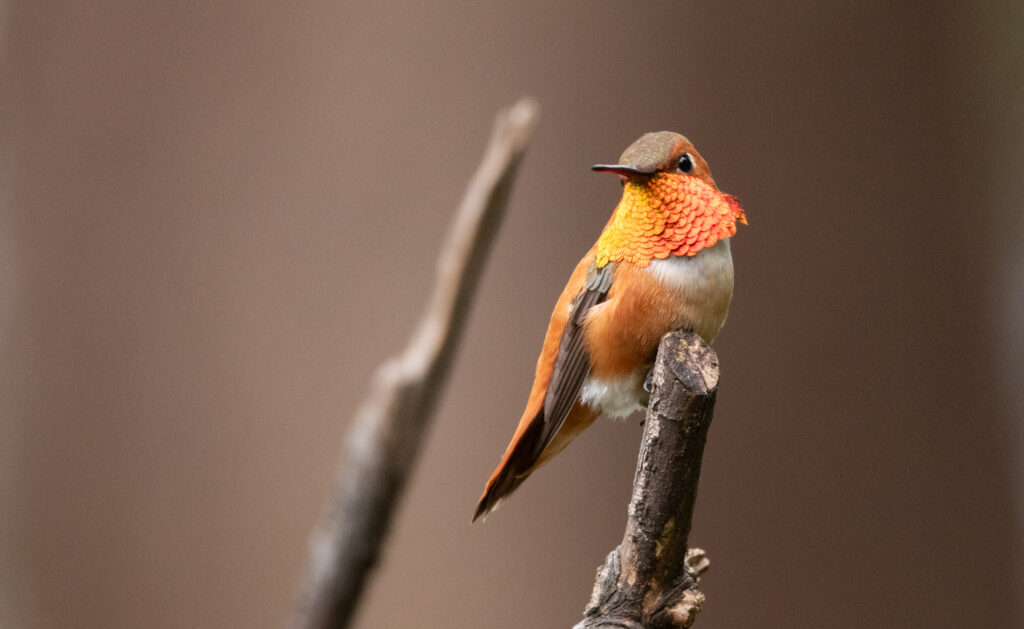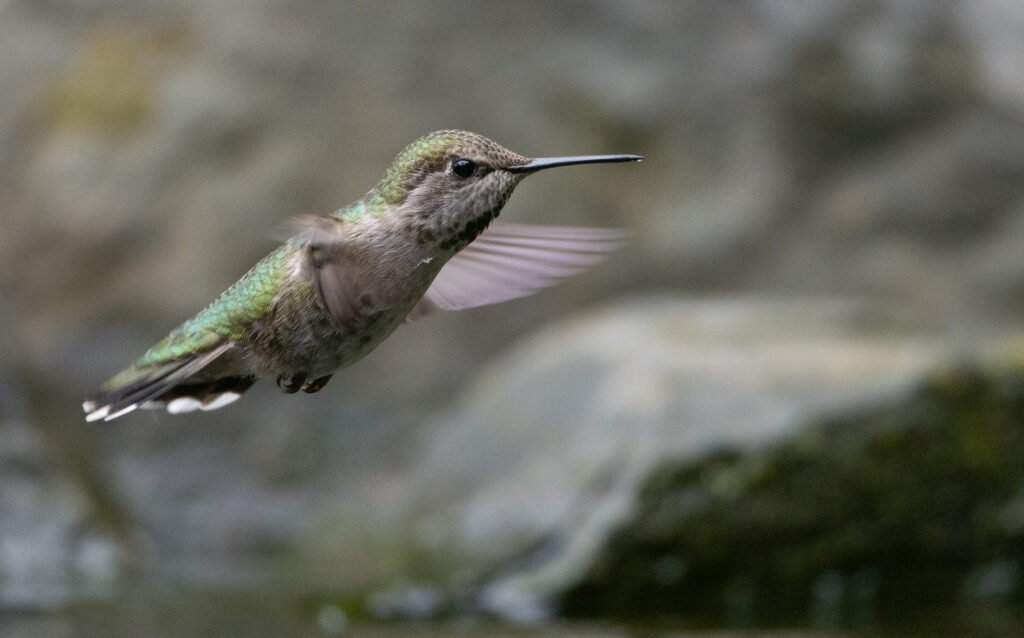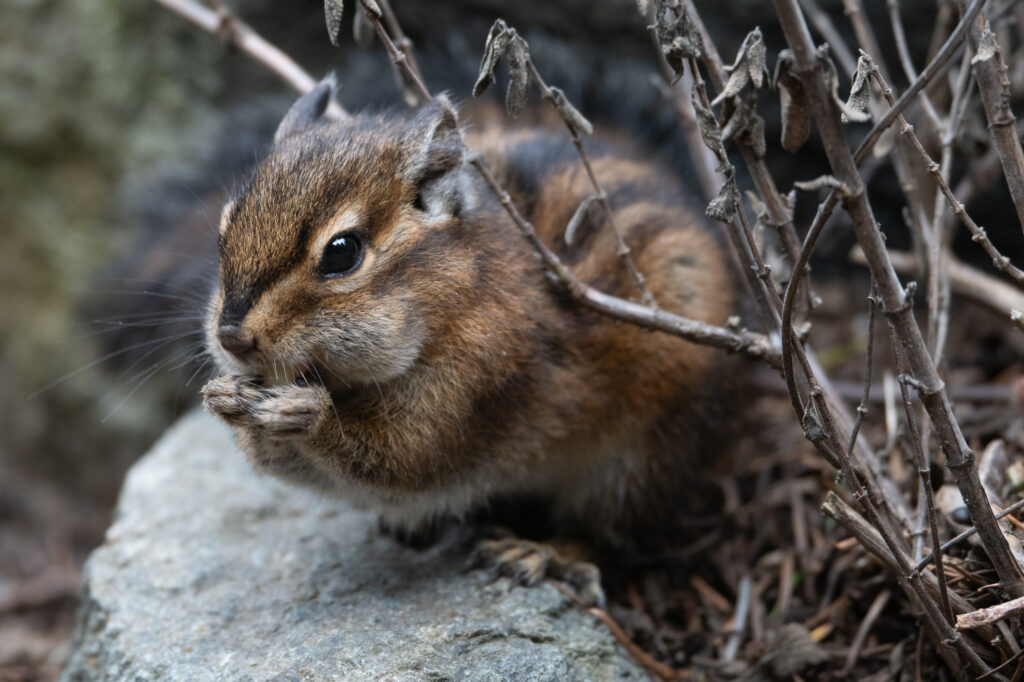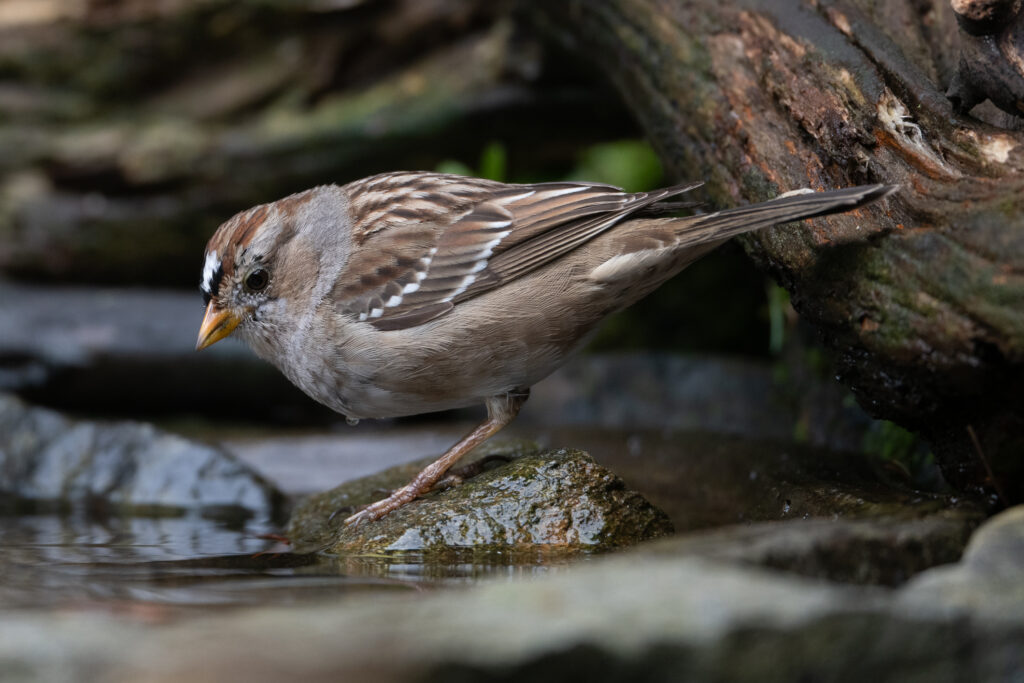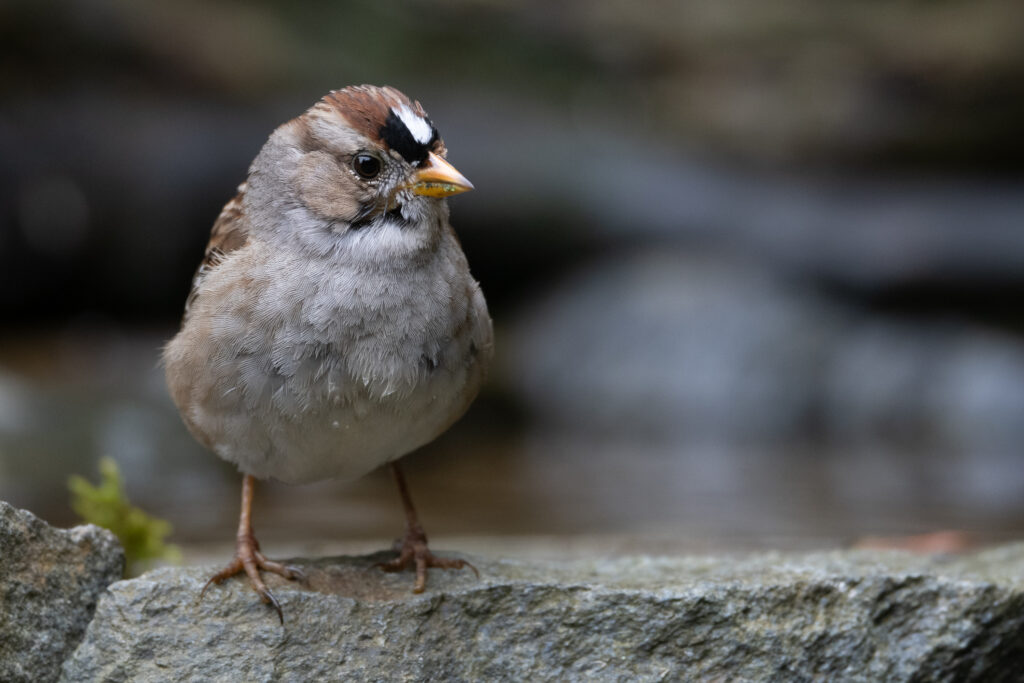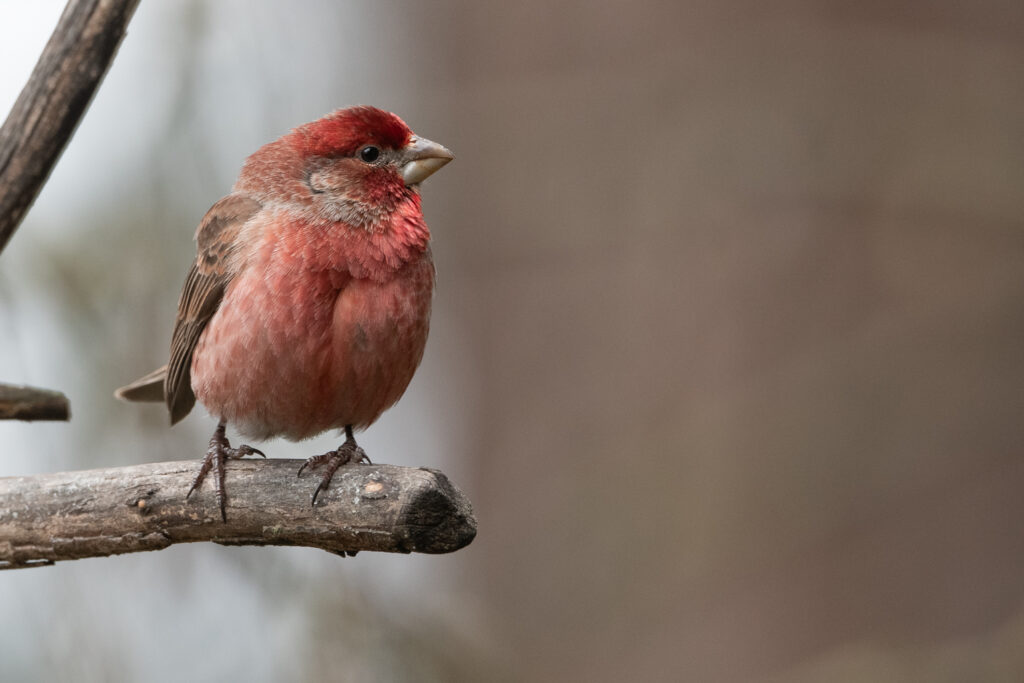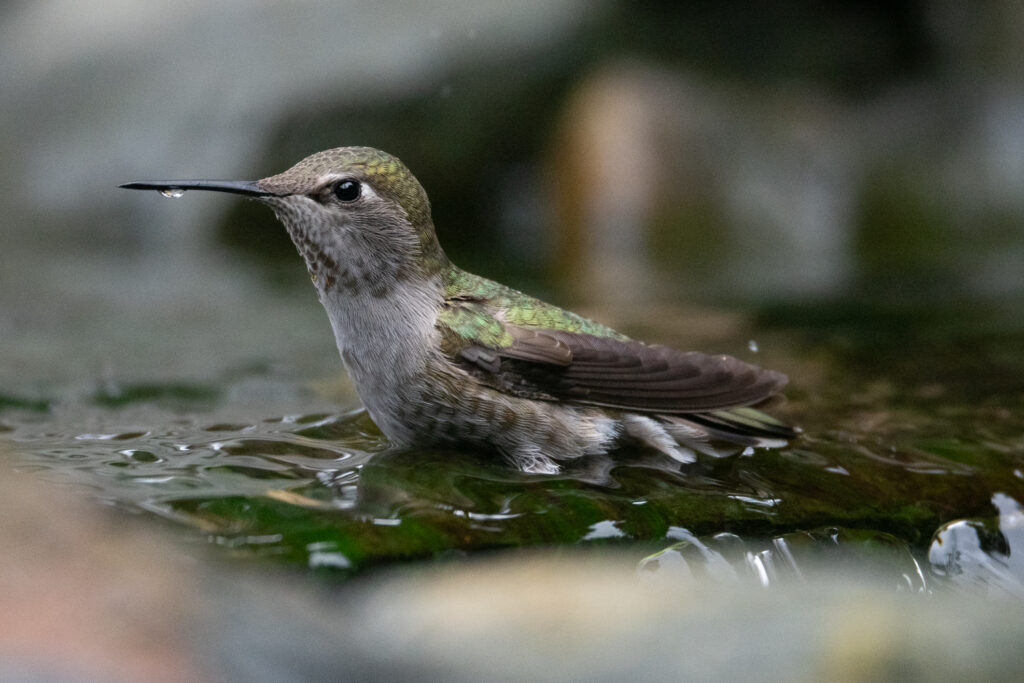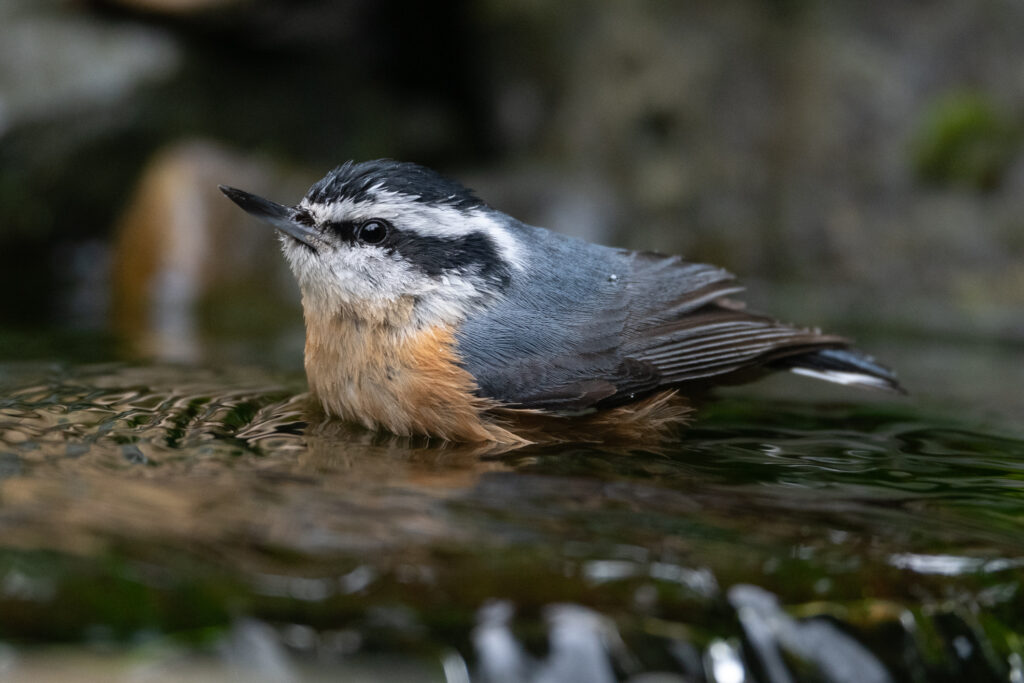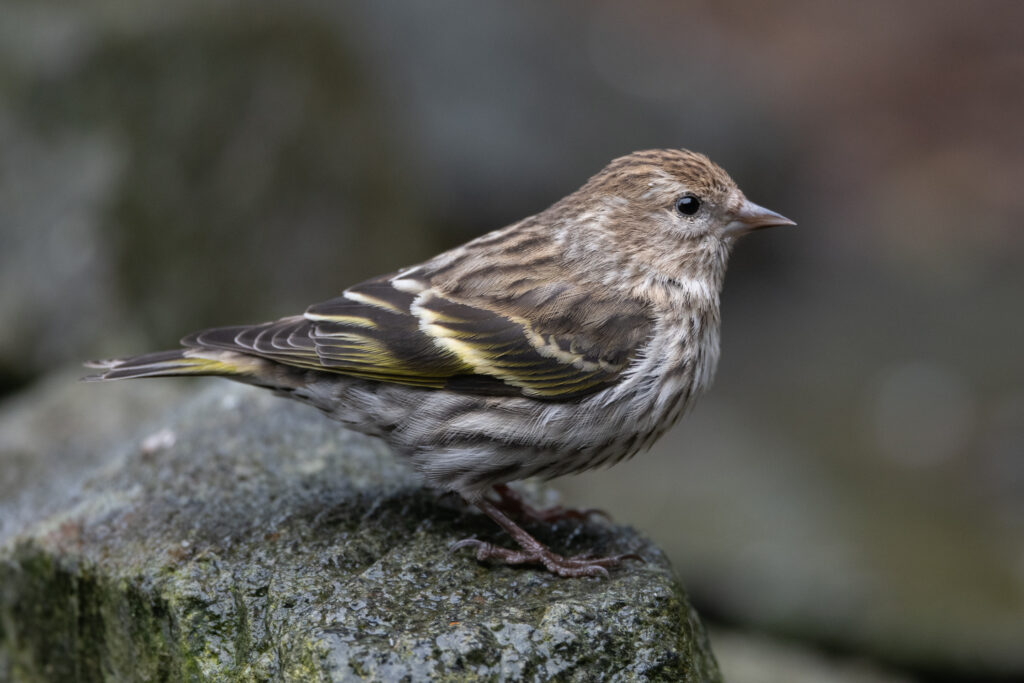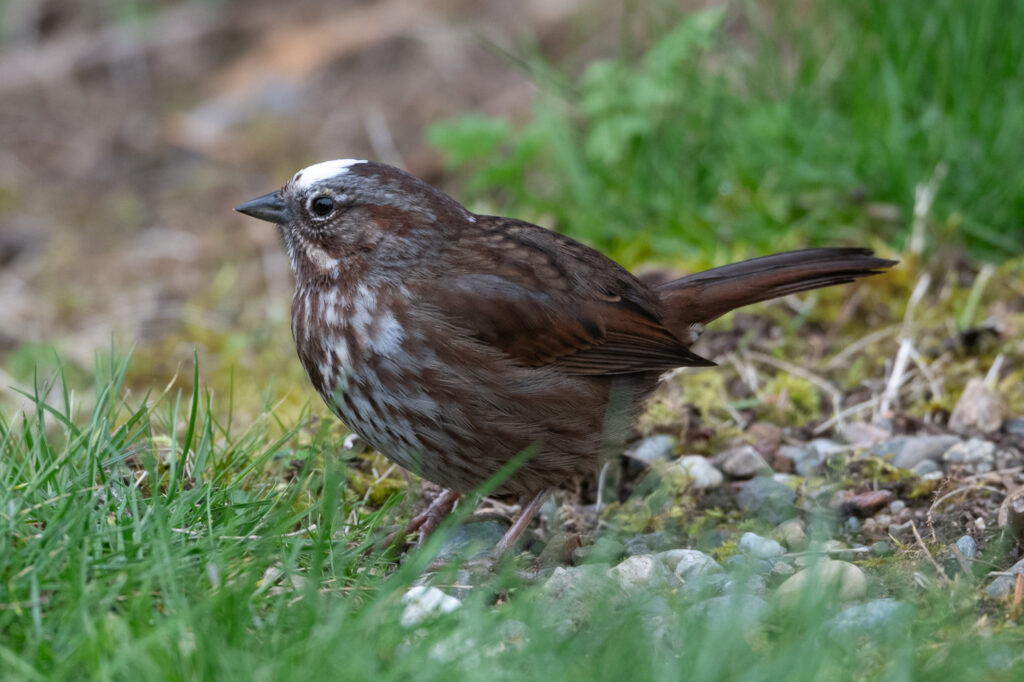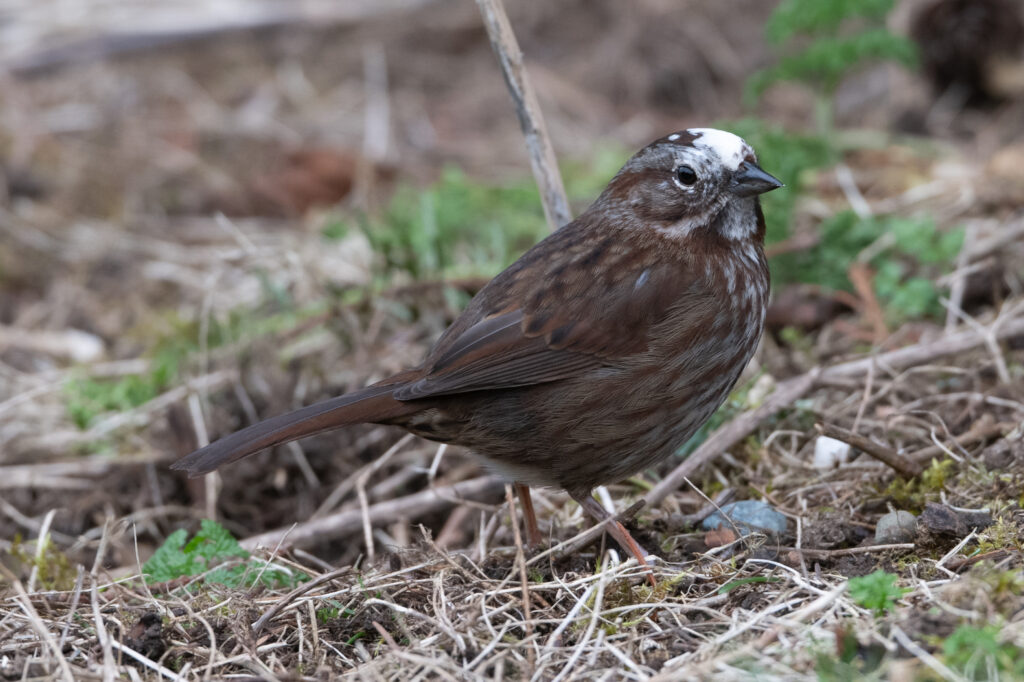While all of us probably welcome the sunshine and warmer weather, it’s not conducive for bird photography! The contrast between shadows and bright light makes it much more difficult to obtain good photographs. As a photographer f must deal with brightness, shadows, back- lighting, glare and reflections and adjust my camera settings accordingly. It doesn’t help that we have a Golden Chain tree that is now in full bloom which not only hides the birds from view (especially warblers and goldfinches) but also reflects off the surface of our watercourse and any wet surfaces. The birds’ activity means the camera settings must be constantly adjusted as the birds move among different lighting situations.
Added to these problems with the actual photography is the fact that we are not seeing nearly as many spring migrants as in past years. This reduces the opportunities for photographing some of our more interesting and colorful birds. My own observations of migrating birds, applied to our own yard in the Cap Sante neighborhood are, in a word, alarming!
For most of the days in the past couple of weeks I have spent three to four hours in the yard waiting to photograph migrants. On most of those days I only have photographs of an Orange-crowned warbler or two to show for it, and even when one enters the yard I don’t always get the opportunity to photograph it! Where are all the migrants that should, judging by this period in past years, be coming through?
Despite so many things working against me there are some successes. I’m probably averaging about 120 photos a day and although I would like to be taking photos of many other species I am, on occasion, getting some very good photos… some of which I’ll display below.
So here is a selection of some of the better photographs I’ve taken in the past few days,,,
A male Golden-crowned kinglet. This species is usually more of a winter resident than a spring/summer resident.
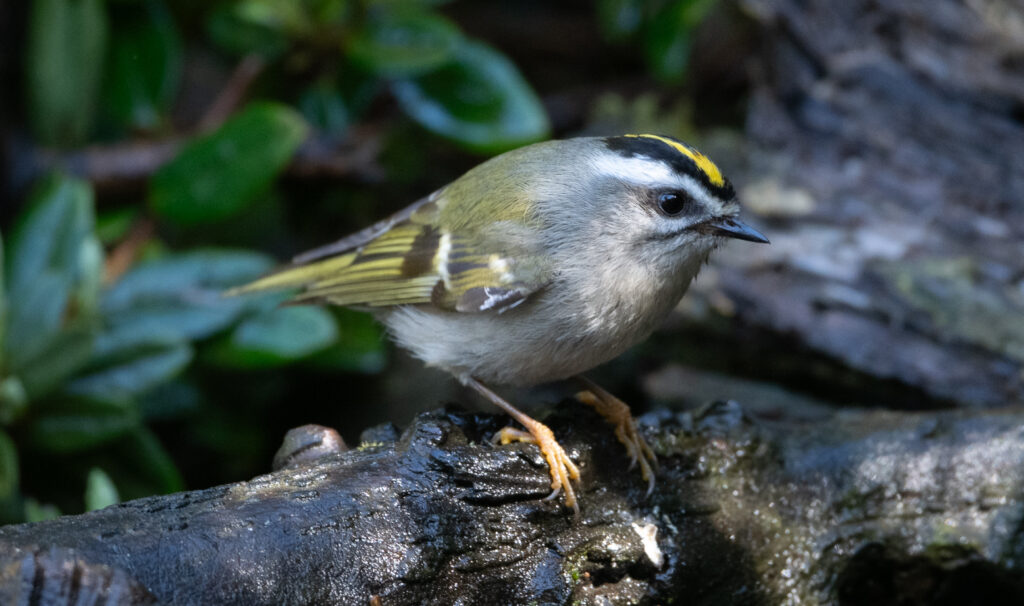
This Red-breasted nuthatch is usually difficult to photograph because of its activity level and the fact that it usually frequents a water feature that is out of good photographic range. (Note the aforementioned Golden Chain Tree in the background.)
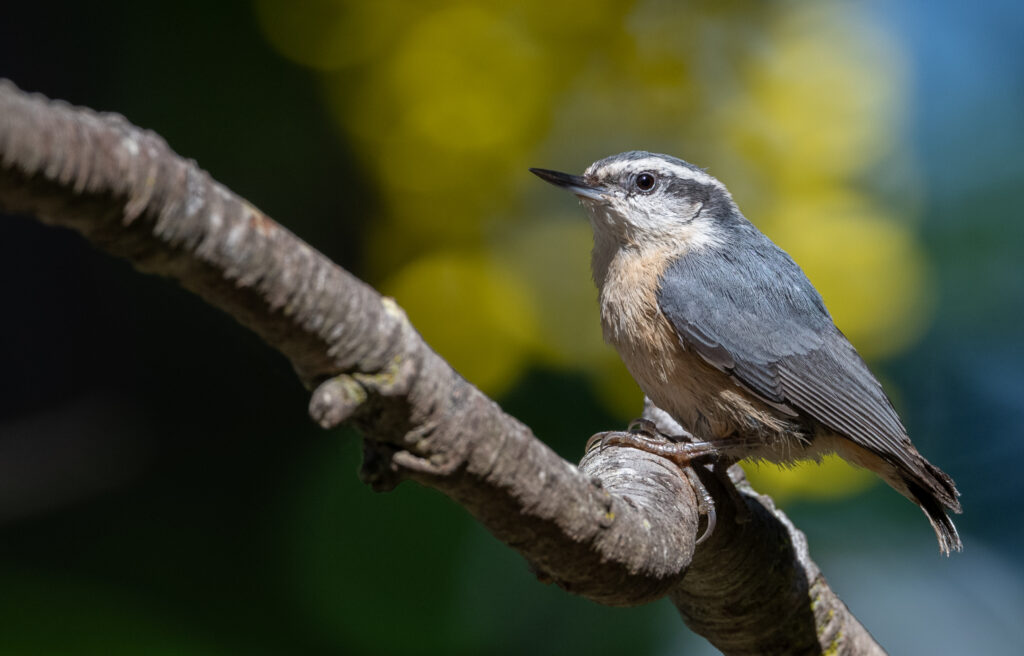
This Bewick’s wren has been enjoying our inverted suet feeder for the past couple of months.
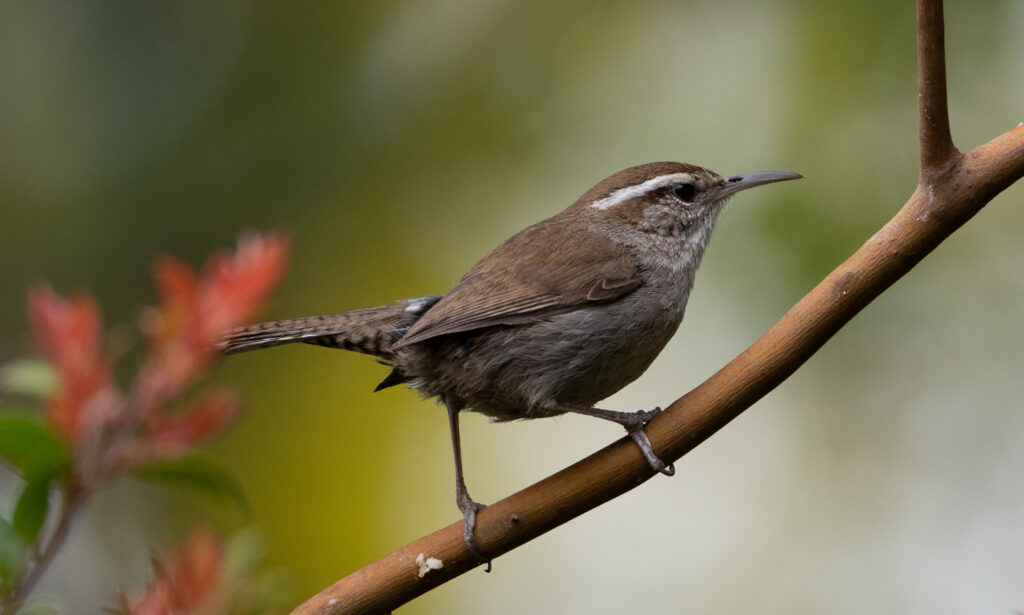
This male Wilson’s warbler is only one of two I’ve seen this season. In past years I’ve considered it our most common warbler.
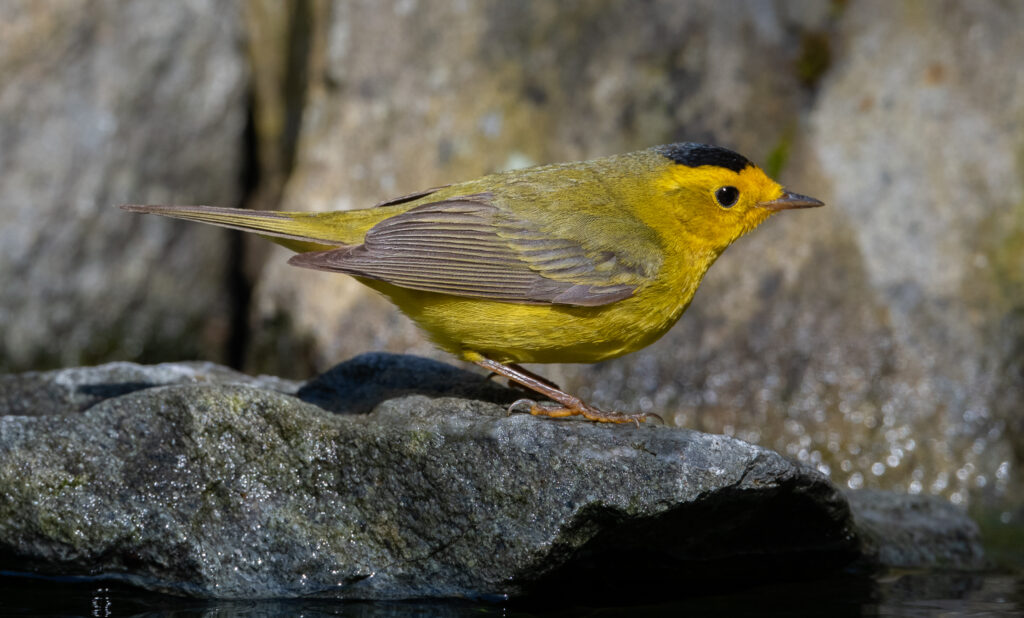
A male Anna’s hummingbird taking a bath in the watercourse…
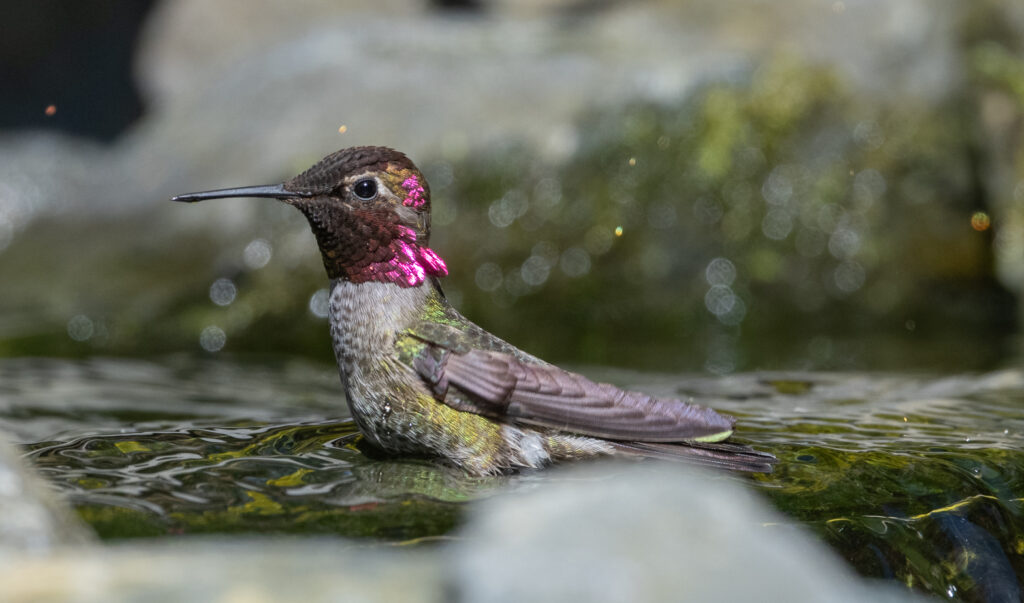
A male House finch…
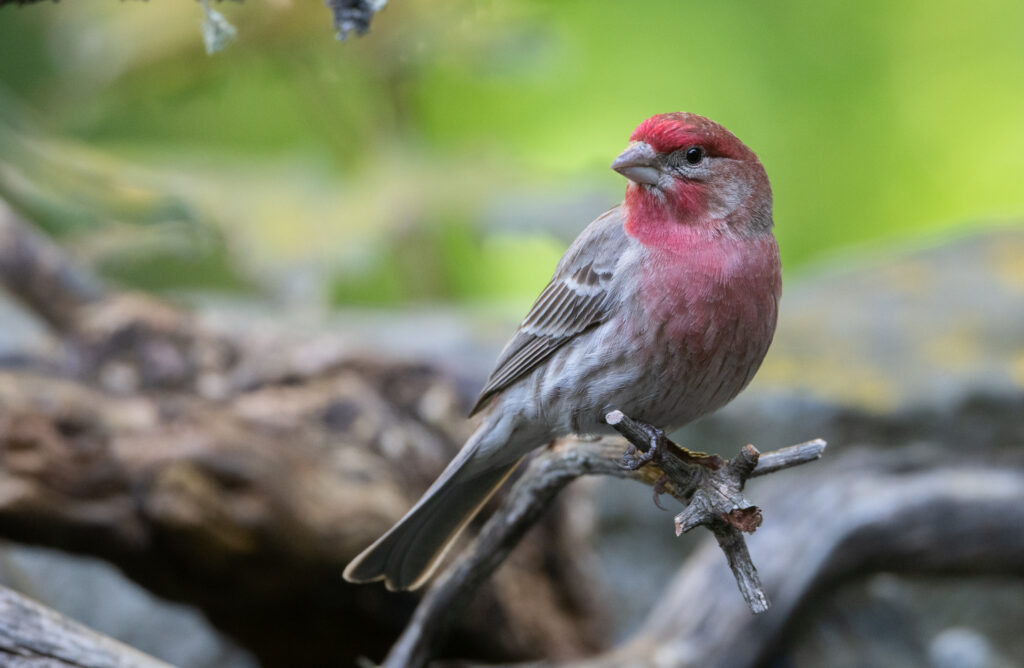
And finally, a female Bushtit. This is probably the second best Bushtit photo I’ve ever taken! (The best was taken less than one second before the one shown here!)
